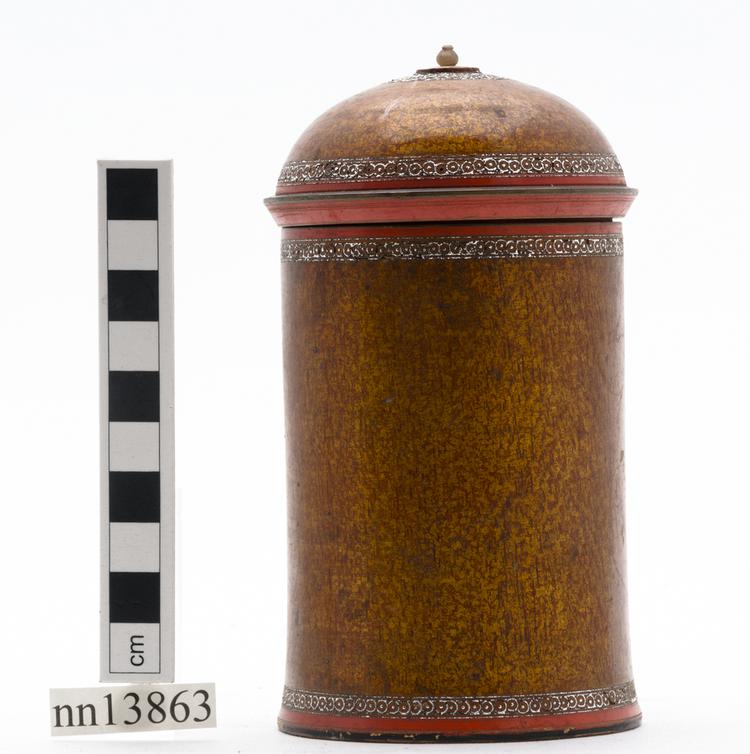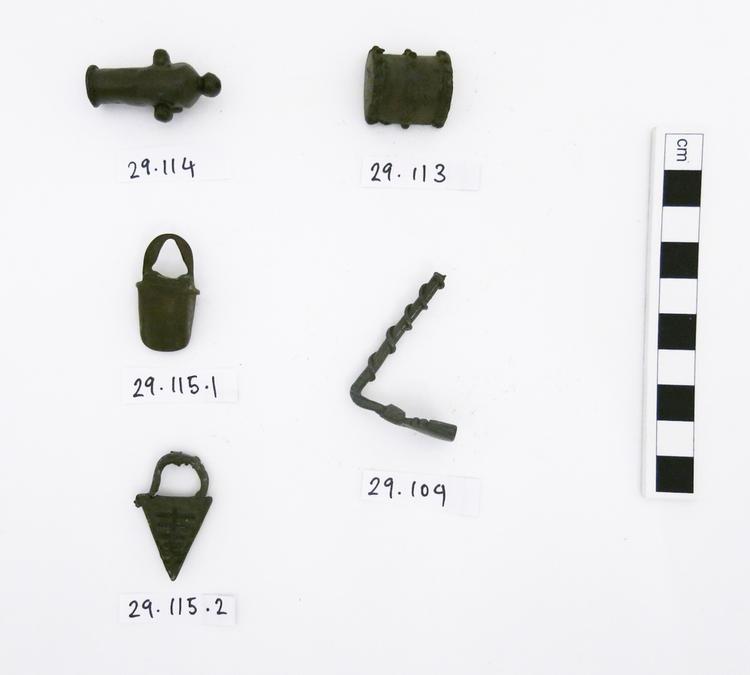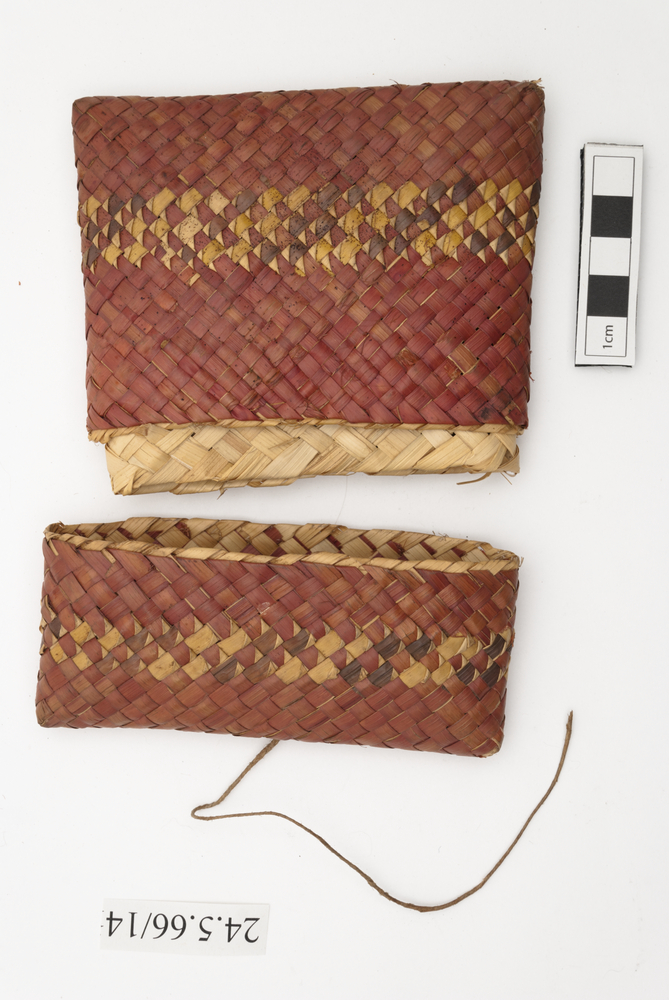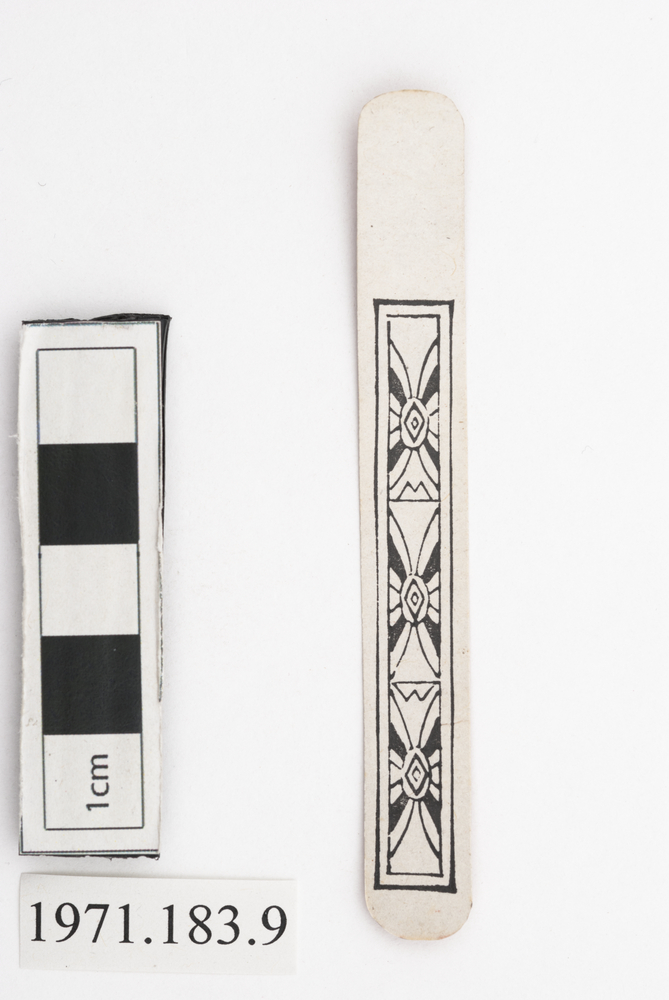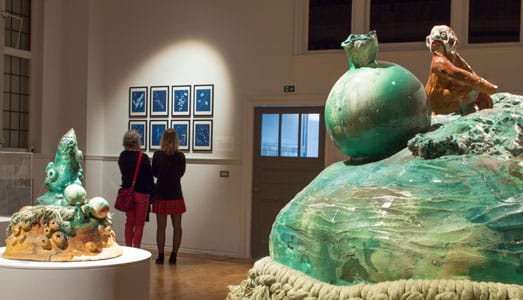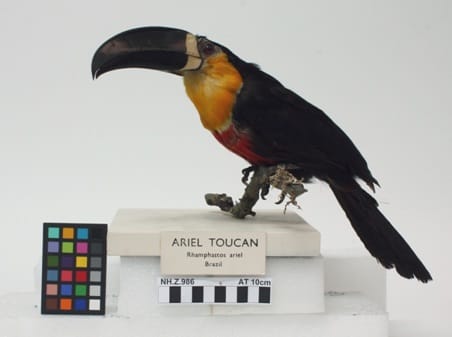
Engraved walrus record tusk depicting hunting and domestic scenes in black pigment. The scenes engraved on each side are described in the annual report for 1909 as follows: (a) Hunting the whale and walrus from canoes. Two whales have been harpooned, and a number of floats are seen attached to the lines. On the right a storehouse on piles, a drying stage, and several men. (b) On the left side above are two dog sledges and men, and below a number of men each dragging what looks like a walrus. On the right are several storehouses and drying stages, some of which are in course of construction, and on the left of these is an inverted canoe on posts.



